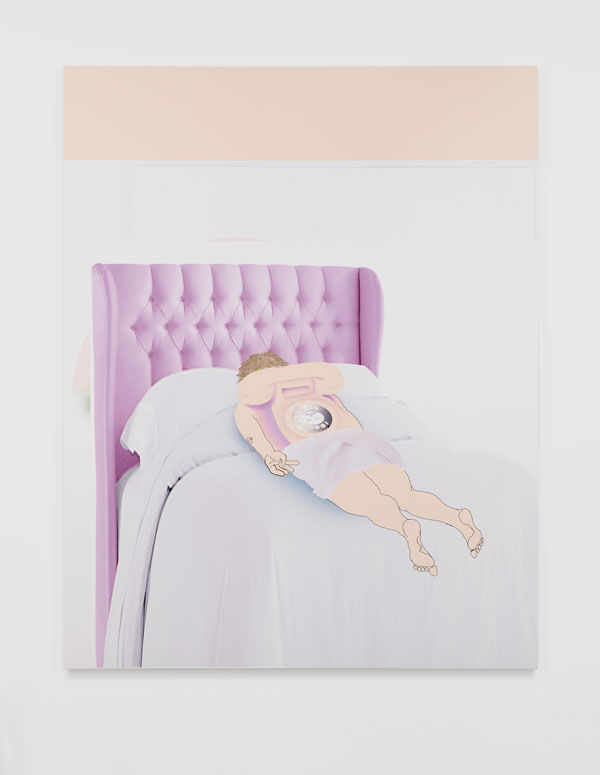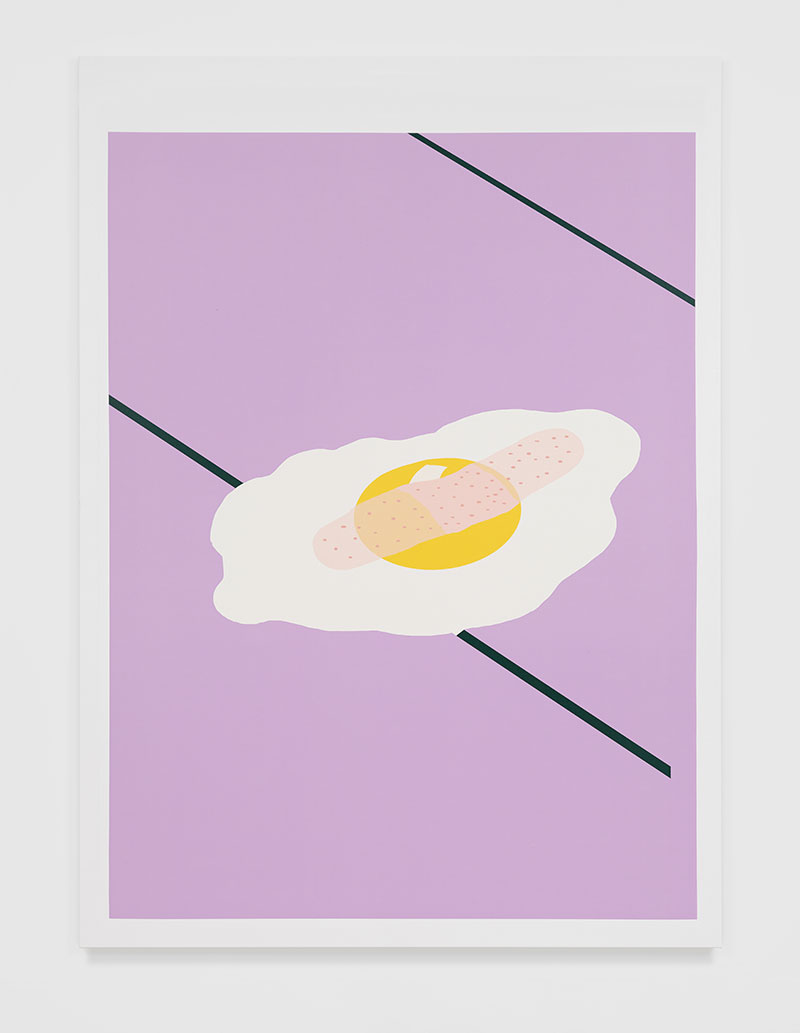“Fructis,” Michael Williams’ first exhibition with David Kordansky Gallery, presents the painter’s familiar wisecracking take on the ephemera of the everyday, as seen in his inkjet paintings, and his formally ambitious “Puzzle” paintings, which take a serious stab at circumventing the figuration/abstraction divide. It could be seen as a bifurcated practice—yet this is a paradoxical assertion; each of these veins informs the other. Like previous iterations, Williams’ seven inkjet paintings are developed with digital drawing tools—here, they are a combination of Photoshop and a drawing pad. Despite the high-tech, they retain a primitive quality, like a crisply designed but intentionally awkward zine, printed on art paper, married to Williams’ cartoony style of drawing. More importantly, they blur the distinction between the digital and gestural.
Williams’ inkjet paintings feel deliciously off-kilter, and the irreverence hits at varying levels, generating layers of ambiguity. Take, for example, JC (all inkjet paintings 2018)—a Christ crucified on a 45 mph road sign—and Descendant Egg, an egg fried sunny side up, band-aid stretched across the yolk as it appears to be slipping through cracks in lavender-colored flooring. With Middle Game 1 Williams uses a modified aspect-ratio photographic image of a bed. The lavender tones of its quilted headboard find echoes in the skin tones of the crudely drawn towel-draped figure that lies prone on the bed—and whose back morphs into an analog telephone. Mike, spatially organized around overlapping geometric fields (the subtle modulations of color between intersecting planes evoking Albers, but updated), is reminiscent of a joke where you meet yourself coming and going—only, Mike (a self-portrait?) is pissing into his own back pocket.
His oil-on-canvas “Puzzle” paintings—a series of disfigurements, if you will—flatten illusionistic space in favor of organic interlocking shapes and an inventive interplay of color and texture. The show’s title can be taken to mean enjoyment (as in the pleasures of painting, perhaps) or some variant of its Latin root; or possibly contemporary slang for “when things go horribly wrong”—a meaning consistent with the exhibition’s epigraph by Anders Sandberg, a research fellow at the Future of Humanity Institute at Oxford University.

Michael Williams, Middle Game 1, (2018), Photography: Lee Thompson. Courtesy of David Kordansky Gallery, Los Angeles.
Sandberg’s quote brackets Williams’ work with a coolly analytical assessment of humanity’s transience over the long haul, in a universe that will ultimately wind down. He posits that the viability of the species can be extended by living as software—a not entirely comforting prospect. It forces recognition of the ways we live symbiotically with software—an evolution readily reflected in Williams’ painting practice.
Positioned adjunctly, an array of 10 enamel-on-linen paintings (10 HBOS, 2018), delivered à la Pollock, mimes HBO’s logo/branding. The predominately grisaille works, formally less convincing than their fellows, are presented as an animated sequence depicting the lead-in to the cable channel’s programming. They might be read as a clever joke on painting’s allure in the golden age of television, or better yet, the concept of seeing patterns in abstraction (pareidolia), which in turn comments on the artist’s puzzle paintings.


